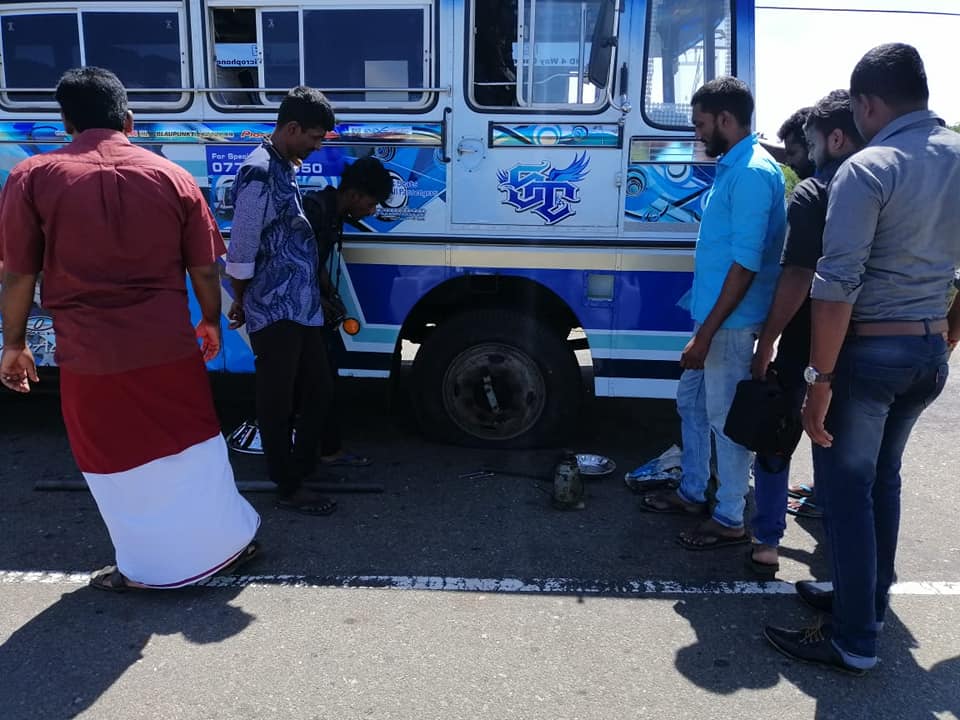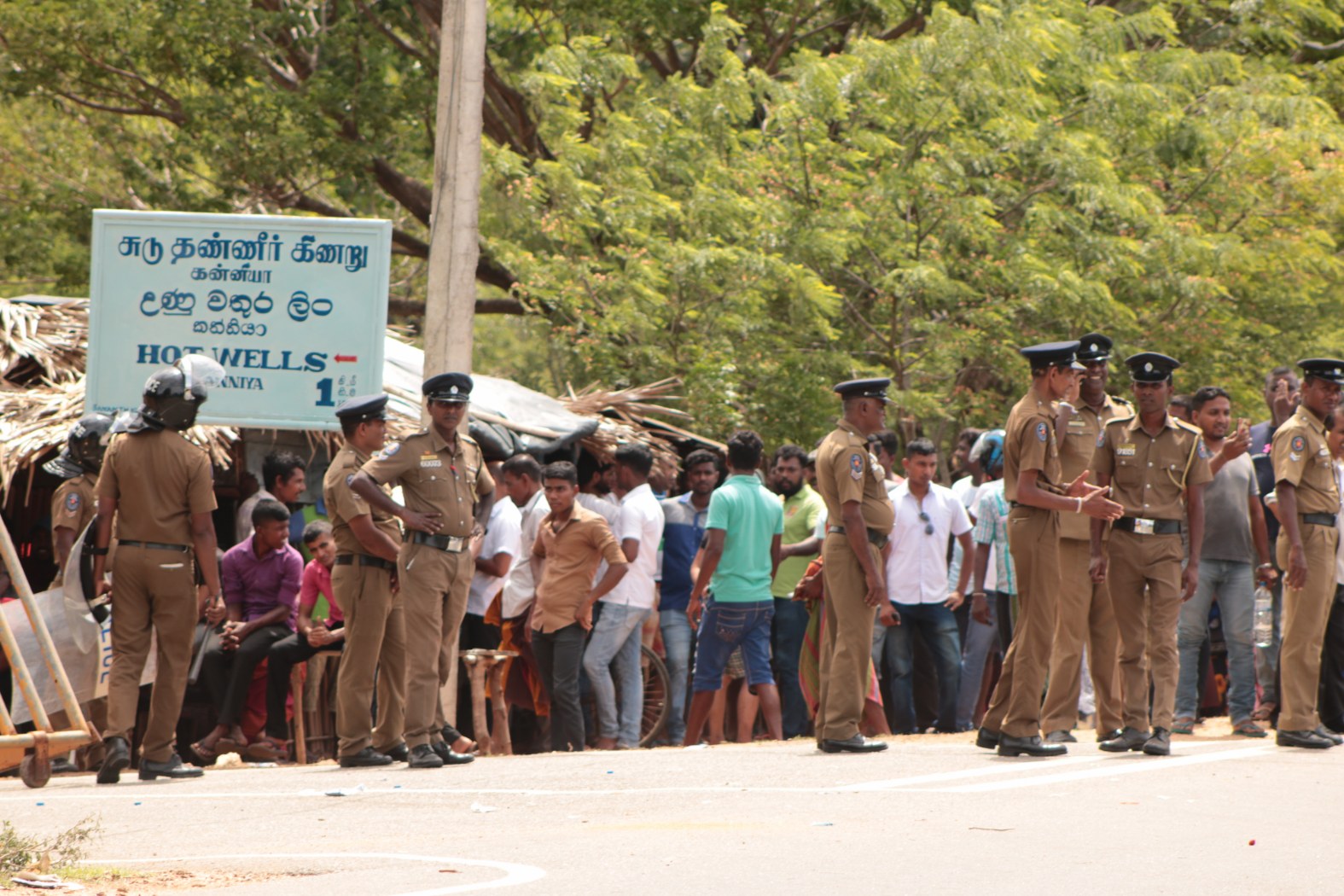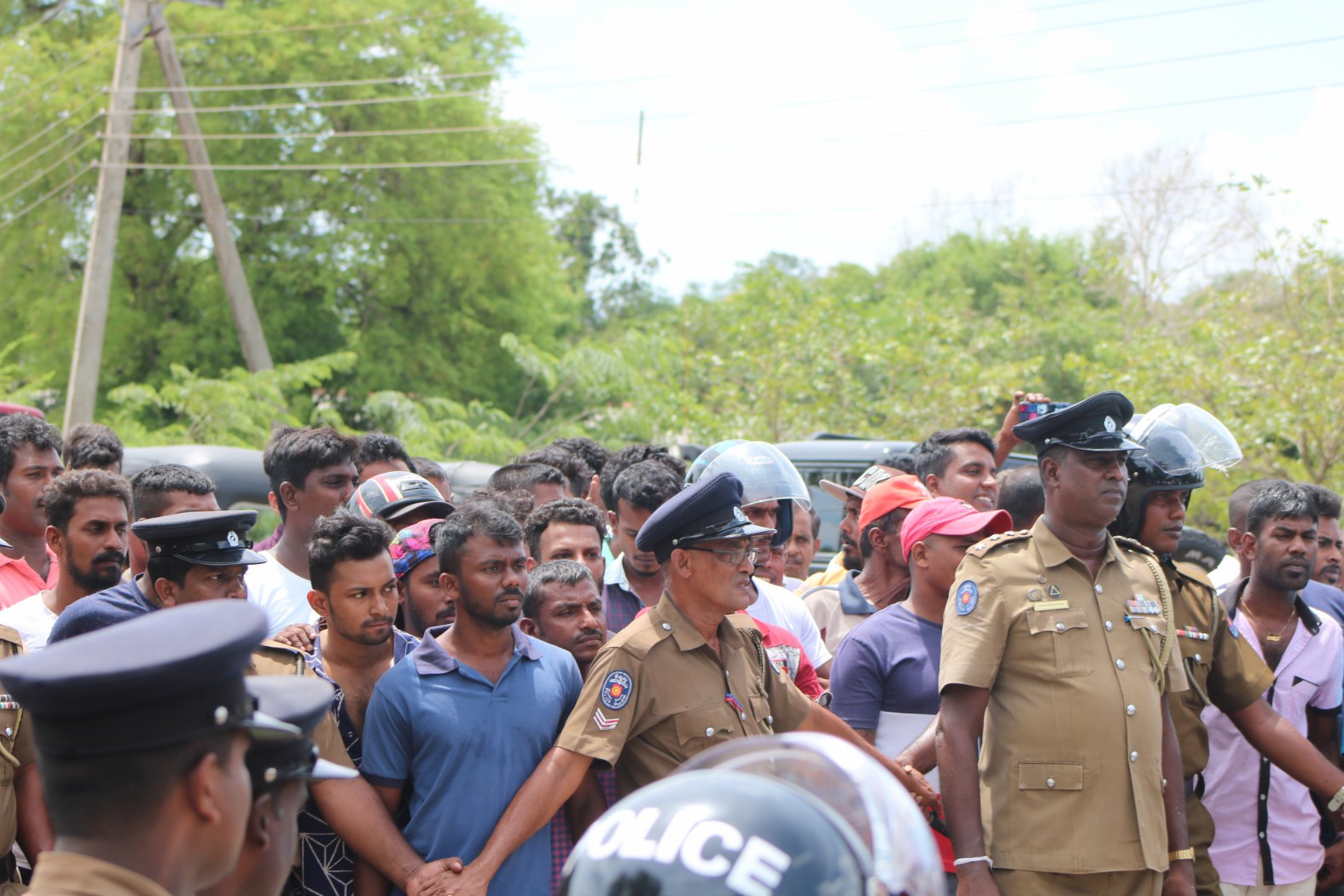Hundreds of Tamils from across the North-East travelled to Kanniya in Trincomalee to protest the destruction of a Hindu temple to make way for a Buddhist vihara. Several protesters were obstructed and blocked en route by Sri Lankan army and police, while some were assaulted by Sinhalese as security forces watched on.
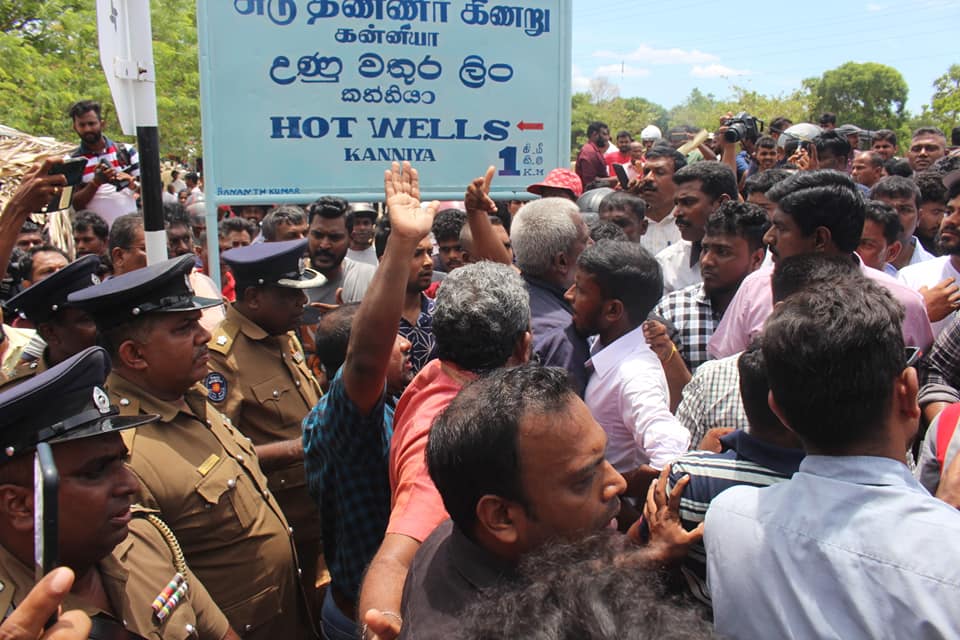
The protest was planned for July 16 following the destruction of the ancient Hindu temple by the Kanniya hot wells, a place of spiritual significance for Tamils which has become disputed due to the Sri Lankan state’s Sinhalisation of the Trincomalee district, especially its historic and touristic sites.
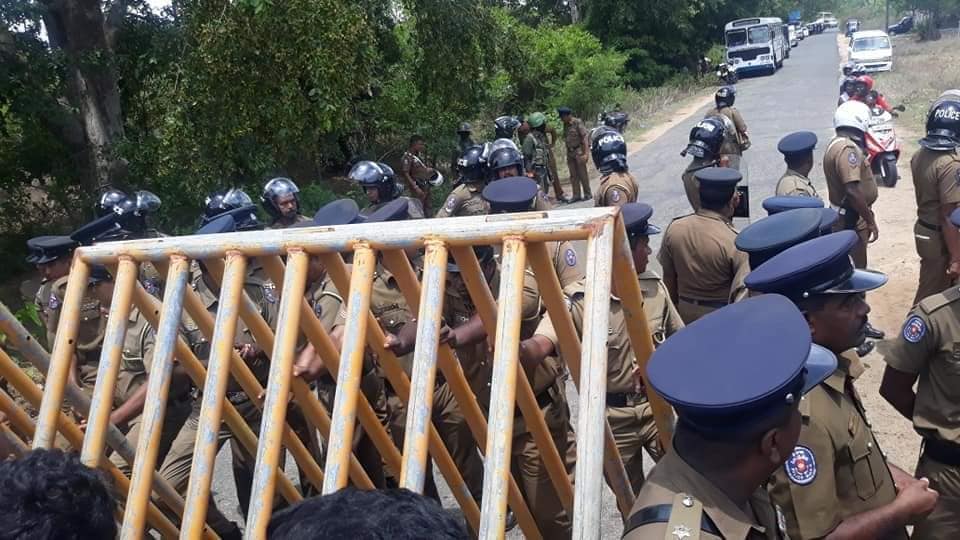
Sri Lankan police had obtained a court injunction against the protest from the Trincomalee magistrate’s court, by arguing that the protest would cause communal tensions. With the injunction notice being served in Sinhala only to the protest organisers, hundreds of Tamils still attempted to make their way as planned to the site, with many being blocked by the Sri Lankan army, police and riot police who had all been deployed in their dozens.
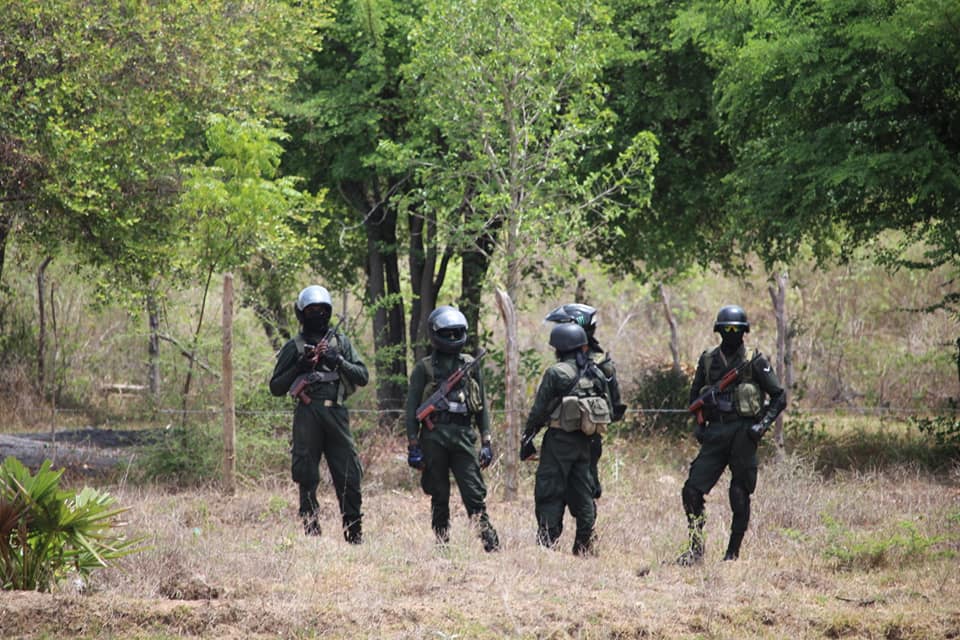
Although the injunction stated that nobody should be allowed to enter the hot wells premises, only Tamils were stopped from entering while Sinhalese traders and counter-protesters were allowed to enter, with police protection.
The Tamil crowds pleaded with police to allow them to enter the disputed site to worship, however being still blocked, protesters carried out prayers on the main road where they were stationed.
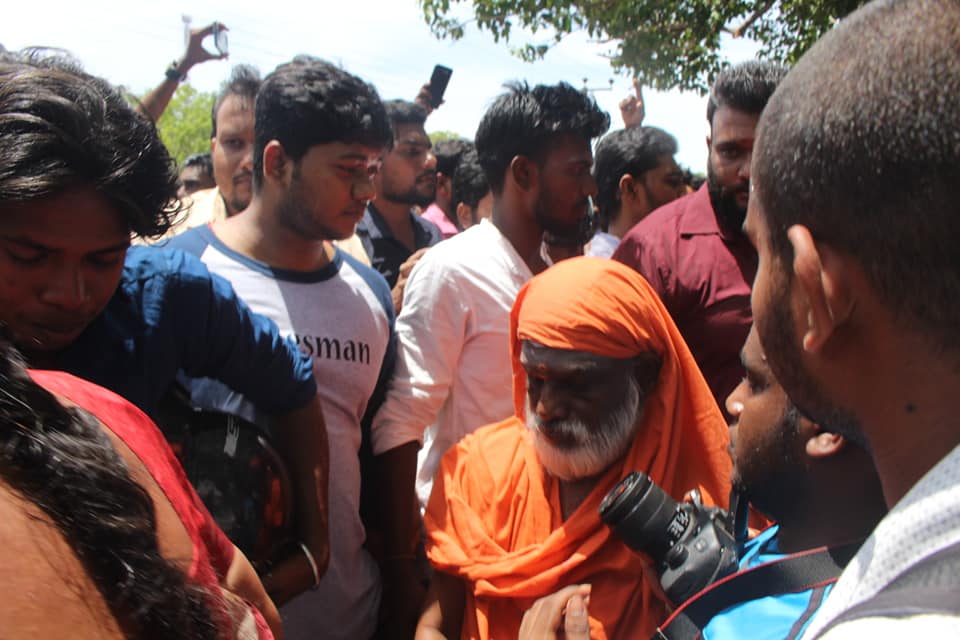
Two representatives, Saivite leader Akarthiyar and the landowner of the Kanniya temple Ms Kokilaramani, were assaulted by Sinhalese traders who splashed them with hot tea, when they were summoned by police for mediation talks.
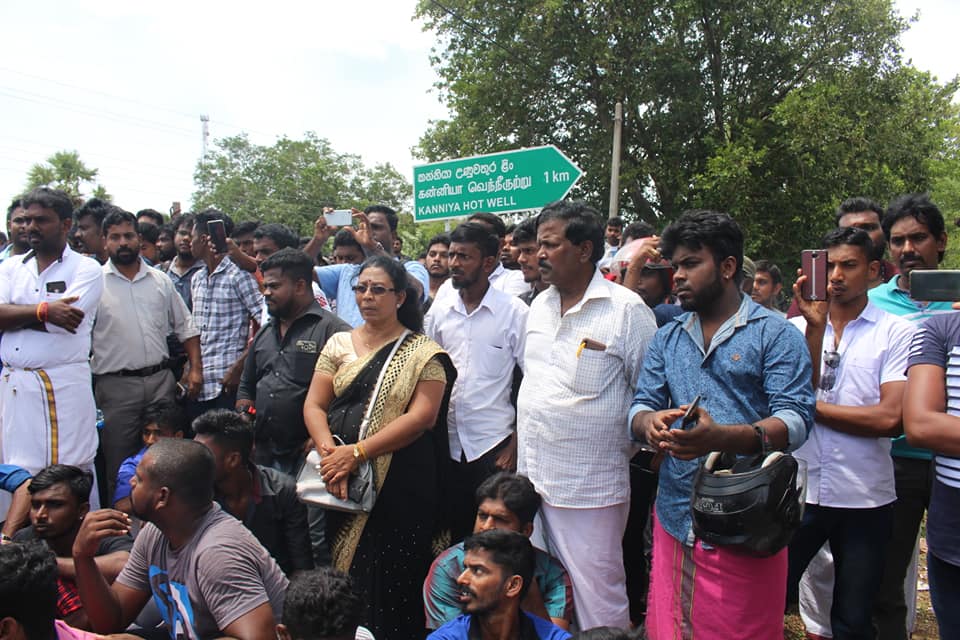
Protesters who travelled to the area from Jaffna and Mullaitivu had their vehicles and bodies subjected to intense searches by the army and police. One group accused Sri Lankan army personnel of deliberately puncturing the tyre of their bus while they had been stopped for checking. In another group, Tamil journalist K Kumanan was harassed by the Sri Lankan army who attempted to detain him longer after the rest of the group was cleared to continue travelling.
